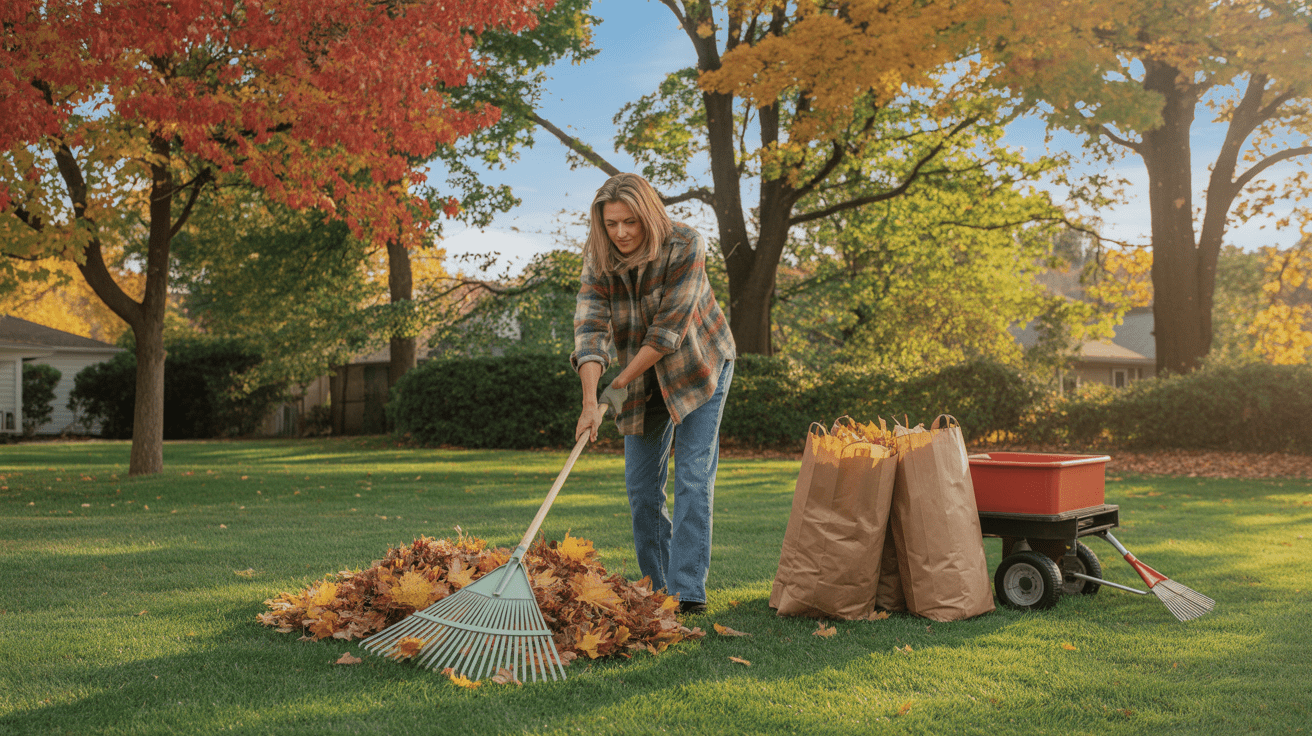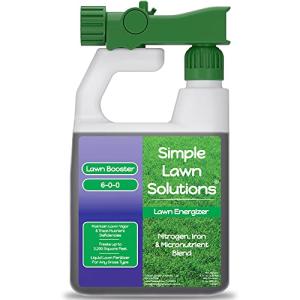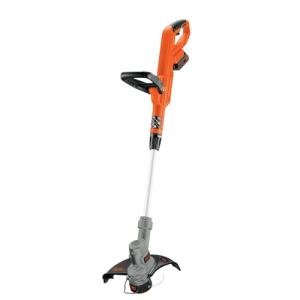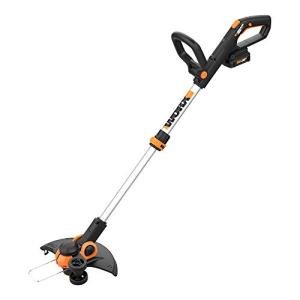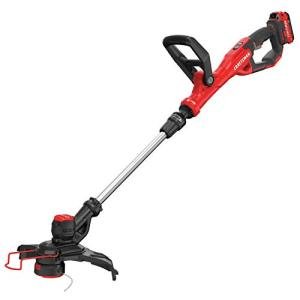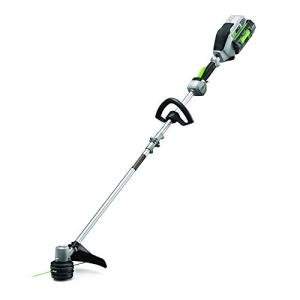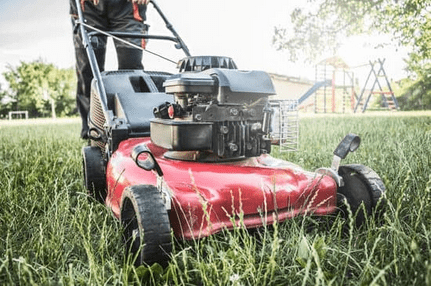Essential Fall Lawn Care Tips to Prepare for Winter

As summer's heat fades, your green space enters a vital recovery phase. The autumn season offers a perfect opportunity to help your turf build strength. Cooler weather and consistent rainfall create ideal growing conditions.
This period is about more than just cleaning up. It's a strategic window to protect your investment. Proper attention now helps your grass survive the cold months ahead. A strong root system developed in autumn leads to a lush, healthy lawn in spring.
This guide walks you through the most effective strategies. We cover everything from feeding the soil to managing fallen leaves. Following these steps will give your turf the resilience it needs.
Key Takeaways
- Autumn is the most important season for strengthening your turf.
- Cooler temperatures and moisture help grass recover from summer stress.
- Focusing on root health now ensures a greener lawn next year.
- Key tasks include feeding, aerating, and overseeding thin areas.
- Removing leaves prevents disease and allows sunlight to reach the grass.
- A systematic approach prevents missing critical steps for winter readiness.
Understanding Fall Lawn Care Basics
As days grow shorter and temperatures moderate, your green space begins its natural recovery process. This seasonal shift creates the perfect environment for turf rejuvenation.
Why Fall is Critical for Lawn Health
Autumn offers unique growing conditions that benefit turf development. Cooler air temperatures combined with warm soil trigger an important biological shift.
Your grass redirects energy from top growth to root system development. This creates stronger, deeper roots that sustain the turf through winter dormancy.
Seasonal Changes and Their Impact on Your Lawn
Cool-season varieties, such as fescue and Kentucky bluegrass, thrive during this period. They experience their most vigorous growth in early to mid-autumn.
Reduced weed competition and consistent rainfall further support recovery. Understanding your specific grass type helps time interventions correctly for optimal results.
The changing sunlight patterns require adjusted maintenance approaches. Proper leaf management becomes increasingly important as the season progresses.
Soil Preparation and Compaction Management
Before applying any treatments to your grass, the underlying soil requires careful attention. Healthy soil provides the foundation for strong root development and overall turf vitality.
Soil Testing, pH Adjustments, and Nutrient Balancing
A professional soil test reveals critical information about your ground conditions. It identifies pH levels and nutrient deficiencies that limit turf performance.
Soil pH directly affects how well grass absorbs nutrients. If your soil is too acidic, apply lime to raise the pH level. For alkaline conditions, sulfur helps lower pH levels.
Incorporating organic matter, such as compost, improves soil structure. This boosts microbial activity and enhances water retention for better root growth.
Aeration Techniques to Improve Root Growth
Soil compaction prevents water, air, and nutrients from reaching the grass roots. Densely packed soil in high-traffic zones creates significant obstacles.
Core aeration removes small plugs of soil to relieve pressure. This process enhances water absorption and facilitates improved contact between the soil and amendments.
Focus aeration efforts on compacted areas near walkways and driveways. These spots benefit most from improved drainage and oxygen flow.
Proper aeration promotes deeper root development. This makes grass more resilient to environmental stress throughout the changing seasons.
Fertilizing and Nutrient Management for Fall Lawns
Strategic fertilization in the cooler season builds the foundation for next year's vibrant lawn. This feeding period focuses on root development rather than top growth. Your turf stores energy reserves for winter survival and spring recovery.
Selecting the Right Fertilizer for Cooler Temperatures
Choose a product specifically formulated for autumn application. Look for formulas high in potassium, which strengthen root systems. Potassium helps grasses withstand cold temperatures and drought stress.
Maintain low phosphorus levels unless your soil test indicates a need for higher levels. Slow-release granular products are most effective during this season. They provide steady nutrients over several weeks without risk of burning.
Timing Your Fertilizer Application for Maximum Benefit
Apply fertilizer approximately 3-4 weeks before the first expected frost in your area. This timing allows grass to absorb nutrients before dormancy. Mid-October through early November is generally suitable for most regions.
A two-feeding approach delivers optimal results. The first application in early fall repairs summer damage. The second feeding 6-8 weeks later stores energy for spring green-up.
Avoid over-fertilizing, as excess nutrients can run off and weaken grass. The goal is strong, sustained growth from the roots upward.
Overseeding and Grass Repair Strategies

Autumn's arrival brings the perfect opportunity to repair summer damage and thicken your turf. Thin or patchy areas become vulnerable to weeds and disease without proper attention.
This seasonal approach is most effective for cool-season varieties. Fescue, Ryegrass, and Kentucky bluegrass respond well to autumn seeding.
Choosing the Appropriate Grass Seed for Your Region
Selecting the right seed ensures successful establishment. Match your existing turf type and consider your local climate.
High-quality blends specifically rated for your region perform best. They establish stronger roots and integrate seamlessly with your current lawn.
Proper Overseeding Techniques to Fill Bare Spots
Combine overseeding with core aeration for optimal results. This creates perfect seed-to-soil contact in the prepared area.
For significant bare spots, use specialized repair products. These 3-in-1 solutions combine seed, mulch, and fertilizer.
Keep the treated zones moist for 2-3 weeks. Light daily watering supports germination without disturbing the seeds.
New growth typically appears within weeks. Continue monitoring until seedlings reach mowing height for a uniform spring appearance.
Mulching Leaves and Enhancing Organic Matter
The vibrant display of changing leaves signals a critical time for managing organic matter on your property. While autumn colors create stunning scenery, fallen foliage requires proper handling to maintain turf health.
The Benefits of Mulching for Soil Health
Whole leaves left on your lawn block essential sunlight that grass needs for energy production. They also trap excessive moisture and restrict airflow, creating ideal conditions for fungal diseases like snow mold.
Mulching transforms this potential problem into a valuable resource. Running a mower over fallen leaves shreds them into small pieces that decompose quickly. This process enriches your soil with natural nutrients.
Earthworms and microorganisms break down the mulched pieces efficiently. The resulting organic matter improves soil structure and enhances water retention. This natural fertilization supports healthier grass growth in spring.
Instead of the strenuous task to rake and bag leaves, mulching offers a sustainable alternative. It saves time while providing long-term benefits to your lawn's ecosystem. Proper timing ensures you don't let thick layers accumulate for more than a few days.
For heavy leaf falls, multiple mowing sessions may be necessary. Diseased foliage should be removed entirely rather than mulched. This approach protects your turf while building soil health through the winter months.
Maintenance: Mowing, Watering, and Weed Control

Your mowing and watering schedule needs careful modification as temperatures continue to drop. These final maintenance steps ensure your turf enters winter in optimal condition.
Adjusting Mowing Practices for Fall
Continue regular mowing as long as your lawn shows active growth. Gradually lower your mower blade height through late autumn. Maintain an ideal cutting height of 2.5 to 3 inches for most cool-season grasses.
Never remove more than one-third of the grass blade in a single session. This prevents stress and promotes healthy development. For the final cut before dormancy, reduce the height by 1-2 inches.
Stop mowing after the first hard frost, typically between mid-October and November. Shorter grass reduces disease risk but avoid scalping, which invites winter weeds.
Managing Watering Needs and Weed/Pest Control
Reduce irrigation gradually as your lawn's water needs decrease. Maintain minimal watering unless weekly precipitation exceeds one inch. This gradual approach supports root health without promoting fungal issues.
Autumn presents the perfect window for weed control. Perennial weeds like dandelions and clover pull nutrients into their roots, making them vulnerable to treatments. Spot-treat with selective herbicides or hand-pull as alternatives.
Monitor for pests like grubs and apply treatments before the first hard frost. This proactive control prevents spring infestations and gives your lawn a healthier start. Proper autumn care now means fewer problems later.
Essential Fall Lawn Care Tips to Prepare for Winter
A well-organized checklist transforms seasonal maintenance into manageable projects. This systematic approach ensures you address every critical aspect of turf protection before cold weather arrives.
A Comprehensive Checklist for Fall Tasks
Your autumn schedule should prioritize tasks that build root strength and prevent winter damage. Begin with soil testing and core aeration to improve nutrient absorption.
Follow with two properly timed fertilizer applications spaced 6-8 weeks apart. This feeding strategy supports root development without promoting top growth.
- Overseed thin areas while the soil remains warm
- Mulch leaves regularly to prevent mold
- Adjust mowing height gradually through the season
- Apply the final cut before the first hard frost
How to Tackle Winter Preparation Challenges
Timing is crucial when preparing your lawn for winter. Complete aeration and overseeding in early fall, while the grass is still actively growing.
Schedule weed control treatments during dry periods for maximum effectiveness. Monitor weather forecasts to avoid applying products during or after rain.
For heavy leaf accumulation, commit to regular mulching rather than waiting for all leaves to fall. This prevents moisture-trapping conditions that encourage snow mold.
Complete all major activities 2-3 weeks before your area's typical first frost date. This gives your turf adequate time to absorb nutrients and establish strength.
Equipment and Tool Maintenance for Fall
As your outdoor tasks wind down, dedicating time to equipment upkeep prevents frustrating delays next season. Proper maintenance extends the lifespan of your tools and ensures they perform reliably when needed.
Cleaning, Sharpening, and Storing Your Tools
Begin by thoroughly cleaning all hand tools. Remove dirt and debris from rakes, shovels, and spreaders. Dry them completely before storage to prevent rust formation.
Sharpening mower blades now saves valuable time next year. Dull blades tear grass rather than cutting cleanly. This can harm your turf's health over time.
Preparing Your Mower and Other Equipment for Next Season
Your mower has worked hard throughout the growing season. Drain all fuel from the tank to prevent carburetor issues. Old gasoline can degrade and cause starting problems.
Clean the mower deck and undercarriage thoroughly. Remove grass clippings that trap moisture. Store equipment in a dry, covered location for protection.
Professional help is available if you're uncomfortable with certain tasks. Fall is the ideal time for service appointments. This avoids the spring rush when everyone needs assistance.
Proper equipment care completes your annual yard maintenance routine. It ensures everything will be ready when the new growing season begins.
Conclusion
Your dedication to autumn turf management culminates in a landscape that is ready for the seasonal changes. The systematic approach outlined here transforms maintenance into an investment.
Each task, from aeration to feeding, builds upon the last. This creates a strong foundation for your grass to survive the cold months.
The effort you put in this fall pays dividends well beyond the current season. A robust root system developed now supports a healthier lawn throughout the entire following year.
Focus on consistent progress rather than perfection. Starting early allows you to address each need methodically before winter arrives.
By adapting these strategies, you provide your grass with the support it needs after a long, hot summer. This preparation ensures a vibrant and resilient spring revival for your outdoor space.
FAQ
Q: When is the best time to start my autumn lawn care routine?
A: The ideal period begins in early fall, around late August to September, while the soil is still warm but the air is cooler. This timing provides grass seed with the best conditions to germinate and allows fertilizer to strengthen the roots before the first frost.
Q: Is it really necessary to aerate my yard in the fall?
A: Yes, core aeration is highly beneficial. It relieves soil compaction, which improves the movement of water, air, and nutrients to the root zone. This process encourages deeper root growth, leading to a thicker, healthier turf that can better withstand summer stress and winter conditions.
Q: What type of fertilizer should I use during the cooler season?
A: Look for a product labeled as a "winterizer" fertilizer. These formulas are typically rich in potassium, which promotes root development and hardiness. It's crucial to use a slow-release nitrogen source to feed the grass steadily without causing a surge in top growth that could be damaged by frost.
Q: Can I leave the leaves on my grass?
A: A thick layer of whole leaves can block sunlight and trap moisture, leading to disease and dead spots. Instead, use a mulching mower to shred them into fine pieces. This natural mulch decomposes, adding valuable organic matter and nutrients back into the soil, which benefits your lawn.
Q: How short should I mow the grass before winter arrives?
A: Gradually lower the mowing height over your last few cuts. For cool-season grasses, a final height of about 2 to 2.5 inches is ideal. Grass that is too long can mat down and encourage snow mold, while grass cut too short can stress the plant and reduce its energy reserves for spring.
Q: Is overseeding worth the effort in autumn?
A: Absolutely. Overseeding is one of the most effective methods for repairing bare spots and enhancing lawn density. The cool, moist weather of early fall provides perfect conditions for new seed to establish. A thicker turf naturally helps crowd out weeds the following year.
Liquid Lawn Fertilizer with Iron for Greener Grass
Get lush green grass quickly and easily with our liquid fertilizer packed with essential nutrients
Product information
$24.77
Product Review Score
4.97 out of 5 stars
89 reviewsProduct links
DISCLAIMER
This document is provided for general information purposes only and should not be relied upon as providing legal advice, technical, or specific operational guidance to the reader, whether as to the practices described in the document or the applicable legal requirements and regulations. Lawnfly.com expressly disclaims any responsibility for liability arising from or related to the use or misuse of any information in this document.

